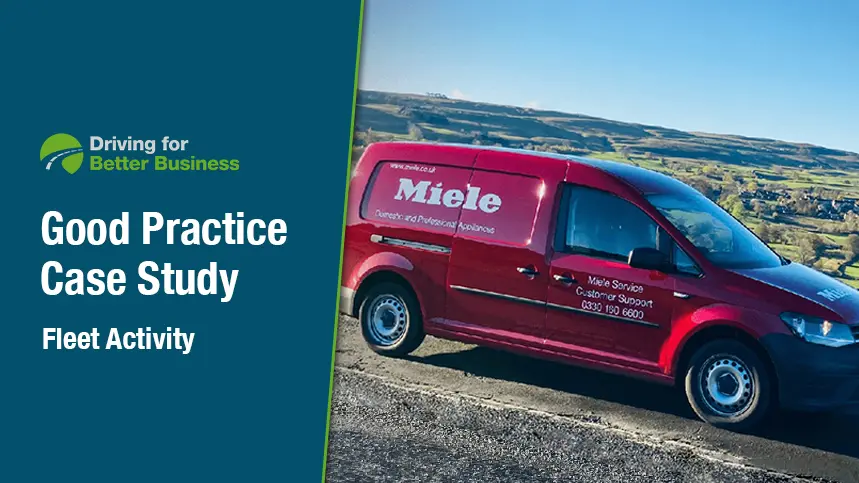
Miele – Fleet Activity
Miele’s car drivers tend to plan their own schedules, while the van fleet is scheduled by Head Office. Mandy says the drivers themselves were keen to engage with the idea of fleet safety, but organisationally she realised Miele was lacking key governance components. When the previous fleet manager left some years previously, fleet governance was decentralised and split between the two separate departments. In 2018 42% of licence checks were incomplete; this was of paramount importance and Mandy worked to achieve 100% licence compliance which Miele now maintains. The company also lacked a driver handbook and there were no fleet inductions for new employees. Mandy created a series of communications which emphasised driving as a critical part of other roles, and worked with HR to make fleet induction a standard part of a new recruit’s training. In Jan 2020, she also took fleet ownership of the 150 van drivers, whose driving risk was more complex, given their high mileage. Mandy says: “Whenever a driver is on the road in a branded vehicle, they are an ambassador for the brand, and their behaviour reflects upon the company as a whole. It was therefore imperative that they keep themselves and other road users safe.” The driver handbook is condensed to 15 pages, but is nonetheless very thorough, and very clear about what is and isn’t acceptable for drivers. It can be used by the HR department, as disciplinary evidence, as drivers are expected to read it, and sign to say they have understood the expectations and policies it contains. Mandy reinforces this with regular bulletins emphasising topics such as the unacceptability of mobile phone use while driving, speed limits and other safety essentials. The handbook also covers driving posture, driver well-being and what to do in the event of a collision.
Provider: Driving for Better Business
Resource Type: Web link
